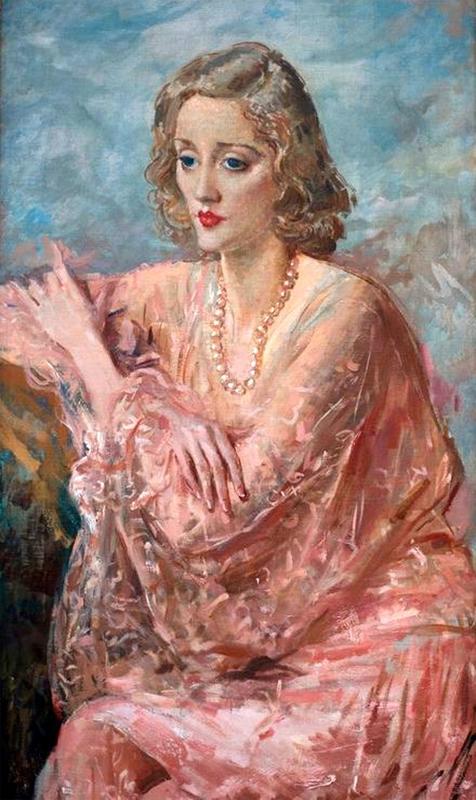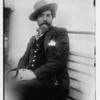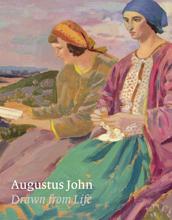More about Tallulah Bankhead
- All
- Info
- Shop

Contributor
Tallulah Brockman Bankhead, by Augustus John, dates from just before the actress left London for the U.S. to appear in movies.
It was her most valuable possession, she says in her autobiography, and she maintained it for the rest of her tumultuous life. She met the artist at midnight at an "after-closing rendezvous" in Soho, London, called the Eiffel Tower. She was drawn to his peculiar ways, the jade earrings he wore, and his scandalous, promiscuous personal life. She also knew that he was one of the greatest portrait painters of his time. He sketched her, and asked if she would sit for a portrait, which she declined. "My harebrained excuse?" she writes―"I couldn't sit still that long!"
Her fidgety behavior is understandable when you think about what her life was like. Her family had moved to Mississippi when the U.S. was very young, to run a plantation and serve as senators to make sure that nobody ever tried to take their slaves away. After Emancipation, they did their best, along with the rest of the "Dixiecrat" politicians, to trap black and indigenous people in positions of extreme economic and political pressure, trying to put the genie of freedom back in the bottle again. Bankhead's father and grandfather were big movers and shakers in the political world, and part of her interest in acting was a way of establishing that she did not agree with their horrifically unjust lifestyle and worldview. Her uncle John H., like his father, served as a senator to his final breath, praised the KKK, and was a lifelong opponent of civil rights. Tallulah smoked 120 cigarettes per day, and had affairs with people like Marlene Dietrich and Hattie McDaniel, publicly denouncing her family's politics.
John pursued Bankhead to do a portrait, but, she writes, "before I would consent to immortality I made John agree to sell me the portrait for a thousand pounds." She liked the idea of appearing in a portrait by a man who had painted Yeats, George Bernard Shaw, and other people she admired. While sitting for the portrait for two weeks, she demanded that John submit a portrait of the actor Sir Gerald du Maurier to the Royal Academy. When he declined, she threatened not to sit another day for him. "Quite a hellion, wasn't I?" she writes. "I should have been spanked. But Sir Gerald was hung."
Just three years after she brought John's painting back to the U.S., where she went to appear in movies, her sexually transmitted diseases necessitated an emergency removal of her uterus. Her rejection of the sexual morality of society is a consequence of the extreme hypocrisy of her family, and a way of countering it with an unlimited sensibility of love and intimacy. Along with Matisse and Noël Coward, Bankhead and John belonged to an eccentric, "slightly louche" club called The Gargoyle on Meard Street in London, which you could only reach by a "rickety lift" that was so tiny that "strangers entering it left as intimate friends at the top."
Sources
- Bankhead, Tallulah. Tallulah: My Autobiography. Jackson, MS: University of Mississippi Press, 2004.
- Dann, John. Maud Coleno’s Daughter: The Life of Dorothy Hartman, 1898-1957. Leicester, UK: Troubador, 2017.
- Feldman, Glenn. Politics, Society, and the Klan in Alabama, 1915-1949. Tuscaloosa: University of Alabama Press, 1999.
- Israel, Lee. Miss Tallulah Bankhead. New York: Putnam, 1972.
- MacIntyre, Ben. Operation Mincemeat: The True Spy Story that Changed the Course of World War II. London: A&C Black, 2010.













